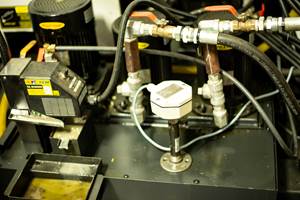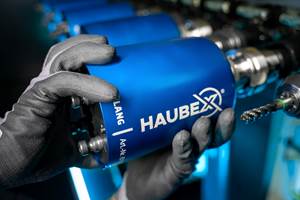Let’s Set the Record Straight on Industry 4.0
With phrases like "Industry 4.0," "big data," "Internet of Things" and "The Digital Factory" floating around, it's time to lay down some definition.
Share


Autodesk, Inc.
Featured Content
View More

Hwacheon Machinery America, Inc.
Featured Content
View More.png;maxWidth=45)
DMG MORI - Cincinnati
Featured Content
View More





ECi Software Solutions, Inc.
Featured Content
View MoreIt seems every trade magazine I pick up nowadays has an article on Industry 4.0 or big data or the Internet of Things or the Digital Factory. These terms are being pitched around like a rugby ball, and almost always with a decided lack of clear definitions.
So, as the saying goes, let’s set the record straight, at least on the meaning of Industry 4.0.
After German Chancellor Angela Merkel, in conjunction with her ministers of industry and education, ordered a study about the manufacturing environment a few years ago, the acatech, a portmanteau word for academic and technology at Germany’s National Academy of Science and Engineering, drafted this country’s official vision of Industrie 4.0 (German spelling). This was to be the coordinated initiative between the IT world, universities and various manufacturing associations to reshape industry. It would seek to combine physical, virtual, IT and cyber systems, and thereby create a new environment for workers and machines. The 4.0 part of the name, incidentally, derives from the fourth industrial revolution—the predecessors being the emergence of mechanization through steam/water power, the impact of electricity on mass production and the invention of the computer, which led to our modern concepts of IT and automation.
Since then, Industry 4.0 has been adopted worldwide as a goal in industry, especially the manufacturing world and, specifically for our purposes, the machine tool market. At this moment, Industry 4.0 represents a high point of dynamic achievement, where every company, whether a large OEM, major-tier supplier or smaller job shop, can implement and benefit from the technologies and communications platforms available today.
Without question, this vision is less a look into the future and more a vibrant collaboration between IT, machine tool builders, industrial automation integrators and especially motion control suppliers. These suppliers function at the heart of the machines, simultaneously effecting motion, and gathering and transmitting the relevant data to the appropriate control link in the company’s infrastructure, all at speeds measured in nanoseconds.
To work effectively, the Industry 4.0 concept requires a standardization of platforms in both communications and language used. In America, the MTConnect effort has been a good start toward standardization in shopfloor data exchange and interoperability. Such efforts must continue so connectivity and Internet data can work together seamlessly.
While the big data idea overwhelms most managers, technicians and operators alike, the key is manipulation of that data in a hierarchy of need, to borrow a term from the psychology world. Mobile devices, tablets, cellphones and now the CNC screen itself can be useful tools in transmitting the most important data from the shop floor to the top floor, or just down the hall to the front office. The small shop owner would be well advised to heed this trend and respond appropriately. That action might take the form of using an integrator to tie all machine functions and outputs together for that day when the OEM or upper-tier customer demands it. In many industrial sectors, that day has already arrived.
Lastly, the cybersecurity issue cannot be understated, as we will see a shift from the open to the closed cloud for data storage in factory or shop networks. The protection of your intellectual property is paramount, on a global scale, today. To overlook that reality is to compromise the stability and security of your company.
Welcome to the future.
Related Content
Managing Coolant with Skimmers, Refractometers and More
Bacteria-infected coolant harms machines and sickens machinists. Coolant management technologies like skimmers and automated systems counter this tendency.
Read MoreCNC Machine Shop Honored for Automation, Machine Monitoring
From cobots to machine monitoring, this Top Shop honoree shows that machining technology is about more than the machine tool.
Read MoreUsing the Toolchanger to Automate Production
Taking advantage of a feature that’s already on the machine tool, Lang’s Haubex system uses the toolchanger to move and store parts, making it an easy-to-use and cost-effective automation solution.
Read More4 Steps to a Cobot Culture: How Thyssenkrupp Bilstein Has Answered Staffing Shortages With Economical Automation
Safe, economical automation using collaborative robots can transform a manufacturing facility and overcome staffing shortfalls, but it takes additional investment and a systemized approach to automation in order to realize this change.
Read MoreRead Next
5 Rules of Thumb for Buying CNC Machine Tools
Use these tips to carefully plan your machine tool purchases and to avoid regretting your decision later.
Read MoreRegistration Now Open for the Precision Machining Technology Show (PMTS) 2025
The precision machining industry’s premier event returns to Cleveland, OH, April 1-3.
Read MoreBuilding Out a Foundation for Student Machinists
Autodesk and Haas have teamed up to produce an introductory course for students that covers the basics of CAD, CAM and CNC while providing them with a portfolio part.
Read More











.png;maxWidth=150)
















.jpg;maxWidth=300;quality=90)













